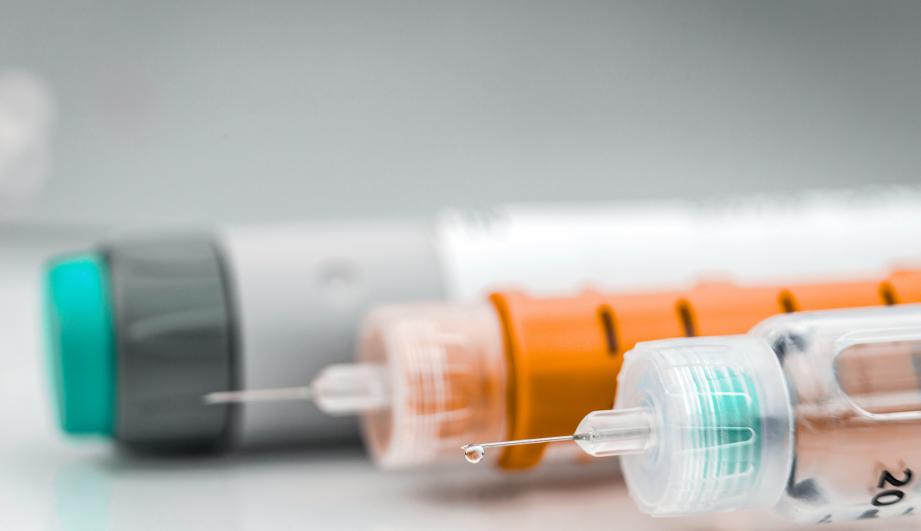Insulin injections are used to regulate blood sugar levels and help maintain them within a healthy range. However, with various types of insulin available, understanding the differences and how they work is vital for effective diabetes management. This guide aims to demystify the world of insulin injections, providing clear and concise information about the different types of insulin injections available and what benefits they’re providing.
Contents
What Are The Benefits Of Insulin Injections?
 Insulin injections are a crucial aspect of managing diabetes, particularly for individuals with type 1 diabetes and for some with type 2 diabetes or gestational diabetes. The benefits of insulin injections are manifold, impacting both immediate blood sugar control and long-term health. Here are some of the key benefits:
Insulin injections are a crucial aspect of managing diabetes, particularly for individuals with type 1 diabetes and for some with type 2 diabetes or gestational diabetes. The benefits of insulin injections are manifold, impacting both immediate blood sugar control and long-term health. Here are some of the key benefits:
- Regulates Blood Sugar Levels
The primary benefit of insulin injections is their ability to regulate blood glucose levels. By administering insulin, people with diabetes can manage their blood sugar levels more effectively. And, reducing the risk of both high (hyperglycemia) and low (hypoglycemia) blood sugar episodes.
- Prevents Short-Term Complications
Without proper insulin therapy, individuals with diabetes risk developing life-threatening conditions such as diabetic ketoacidosis (DKA) in type 1 diabetes or hyperosmolar hyperglycemic state (HHS) in type 2 diabetes. Insulin injections are vital in preventing these acute complications.
- Lowers Risk of Long-Term Complications
Consistently high blood sugar levels over time can lead to various long-term complications, including heart disease, kidney damage (nephropathy), nerve damage (neuropathy), and eye damage (retinopathy). By managing blood sugar levels effectively with insulin, these risks are significantly reduced.
- Flexible Dosing
Insulin therapy can be tailored to each individual’s needs. Different types of insulin (rapid-acting, long-acting, etc.) and dosing strategies allow for personalized treatment plans that can adapt to routine, diet, and exercise changes.
- Psychological Benefits
Effective diabetes management through insulin therapy can provide a sense of control over one’s health, which can be psychologically beneficial and reduce anxiety related to unpredictable blood sugar levels.
It’s important to note that while insulin injections offer these benefits, they must be carefully managed and balanced with diet, exercise, and regular blood sugar monitoring. All of this will help to avoid potential side effects.
What Are The Different Types Of Insulin Injections?
Insulin injections are categorized based on how quickly they start to work in the body and how long their effects last. Here are the different types of insulin injections:
Rapid-Acting Insulin
- Onset, Peak, and Duration: Begins working within approximately 15 minutes of injection, peaks at about 1 hour, and continues to be effective for 2 to 4 hours.
- Usage: Typically used to control blood sugar spikes during meals. It’s often taken just before a meal to manage the rise in blood glucose that occurs after eating.
- Advantages: Rapid action allows for more flexible dosing, as it can be taken just before, during, or after meals.
- Examples: Insulin lispro (Humalog), Insulin aspart (NovoLog), Insulin glulisine (Apidra).
Short-Acting Insulin
- Onset, Peak, and Duration: Starts to work within 30 minutes, peaks between 2 to 3 hours, and remains effective for approximately 3 to 6 hours.
- Usage: Often used 30 minutes before a meal to cover the rise in blood glucose that comes from eating.
- Advantages: Allows for somewhat predictable management of blood sugar around meal times.
- Examples: Regular insulin (Humulin R, Novolin R).
Intermediate-Acting Insulin

- Onset, Peak, and Duration: Begins working within 1 to 2 hours, peaks around 4 to 12 hours, and can last up to 18 hours.
- Usage: Often used to cover blood sugar increases between meals and overnight. Frequently combined with rapid- or short-acting insulin.
- Advantages: Provides more prolonged blood sugar control, which can be beneficial for overnight or between meals.
- Examples: NPH insulin (Humulin N, Novolin N).
Long-Acting Insulin
- Onset, Peak, and Duration: Slow and steady onset, typically taking several hours to start working. It doesn’t have a pronounced peak and lasts for up to 24 hours or more.
- Usage: Provides all-day blood sugar control and is usually taken once or twice a day.
- Advantages: Mimics the body’s natural, low-level insulin secretion, making it a good base-level insulin.
- Examples: Insulin glargine (Lantus, Basaglar), Insulin detemir (Levemir), Insulin degludec (Tresiba).
Ultra Long-Acting Insulin
- Onset, Peak, and Duration: Starts to work within 6 hours of injection and can last for 36 hours or more, providing a very consistent and steady effect.
- Usage: Often taken once a day for round-the-clock blood sugar control.
- Advantages: Reduced frequency of injections and more stable blood sugar levels, especially beneficial for individuals with unpredictable schedules.
- Example: Insulin degludec (Tresiba).
Pre-Mixed Insulin
- Composition and Action: These formulations combine intermediate-acting insulin with either rapid-acting or short-acting insulin. The mixtures are designed to offer both immediate and intermediate insulin action.
- Usage: Simplifies the insulin regimen by covering both mealtime and basal insulin needs with one injection.
- Advantages: Ideal for people who may struggle with mixing insulins or those who prefer the convenience of pre-mixed doses.
- Variations: Different products have varying proportions of short/rapid-acting to intermediate-acting insulin (e.g., 70/30, 50/50, 75/25), to cater to individual needs.
Each type of insulin has its unique characteristics and is suited for different patterns of blood sugar control, lifestyle choices, and dietary habits. Individuals need to work with their healthcare providers to determine the most appropriate insulin regimen for their specific needs.
Which Insulin Injection Is Best For Diabetes?
 Determining the “best” insulin injection for diabetes is highly individualized and depends on several factors. Here are some tips to consider when selecting an insulin regimen:
Determining the “best” insulin injection for diabetes is highly individualized and depends on several factors. Here are some tips to consider when selecting an insulin regimen:
Type of Diabetes
- Type 1 Diabetes: Usually requires a combination of rapid- or short-acting insulin with long-acting insulin. This mimics the body’s natural insulin production more closely.
- Type 2 Diabetes: May be managed with long-acting insulin, or a combination of insulins depending on the severity and individual response to treatment.
Blood Sugar Control
- Assessing Patterns: Understanding when your blood sugar levels tend to rise or fall can help determine the best insulin type. For instance, if post-meal spikes are an issue, rapid-acting insulin might be ideal.
Lifestyle and Meal Patterns
- Meal Regularity: If you have a very regular meal schedule, short-acting insulin before meals might work well. For those with less predictable schedules, rapid-acting insulin that can be taken just before or after eating may be more practical.
- Activity Levels: More physically active individuals might need a different insulin strategy to manage exercise-induced glucose changes.
Ease of Use and Convenience
- Insulin Pens vs. Syringes: Some people prefer the convenience of insulin pens over vials and syringes.
- Insulin Pumps: For continuous insulin delivery, an insulin pump might be an option.
Side Effects and Hypoglycemia Risk
- Different insulin types have varying risks of causing low blood sugar (hypoglycemia). Your tolerance for hypoglycemia might influence the choice of insulin.
Insurance Coverage and Cost
- The cost of insulin and what is covered by insurance can also play a significant role in deciding which insulin to use.
- It’s essential to work closely with your healthcare provider, who can help tailor the insulin type and regimen to your specific needs, monitor your response, and adjust as necessary.
Remember, what works best for one person may not be the best for another. Ongoing monitoring and communication with a healthcare provider are key to finding the most effective insulin therapy for your individual needs.
Conclusion
In conclusion, understanding the various types of insulin injections and their unique characteristics is crucial for effective diabetes management. Whether you have Type 1 or Type 2 diabetes, the choice of insulin depends on your individual health needs, lifestyle, and how your body responds to insulin. It’s important to remember that there is no “one-size-fits-all” solution, and working closely with your healthcare provider is essential to find the most suitable insulin regimen for you.
By staying informed and actively involved in your diabetes care, you can manage your condition effectively and maintain a healthy, balanced life. Do you want to get rid of diabetes? Join our online diabetes treatment program and reverse Diabetes naturally through lifestyle changes such as a Personalized Diet plan, Exercise, Yoga, dieticians, and health coaches.

